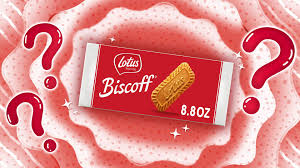When the holiday season arrives, cozy evenings often call for warm drinks that carry both comfort and tradition. One festive question that often sparks curiosity is what flavor is Bischof? This unique German and Austrian holiday beverage has intrigued travelers and food enthusiasts for centuries. With its deep history, rich spices, and festive character, Bischof is more than just a drink—it’s a cultural experience. Understanding its flavor means looking into its ingredients, preparation, and the way it has been enjoyed throughout generations.
At first glance, Bischof might look like a variation of mulled wine, but it has a distinct personality that sets it apart. People often hear about Glühwein, the famous German mulled wine, but Bischof deserves equal recognition because of its complex taste and traditional roots. To truly appreciate its flavor, you need to picture yourself standing in a snowy German market, holding a steaming mug that fills the air with aromas of citrus, cloves, and red wine. That moment captures the essence of Bischof.
The Origins of Bischof
Before describing its taste, it helps to understand where Bischof comes from. The drink dates back centuries and was traditionally served during winter festivities in Germany and Austria. The word “Bischof” translates to “bishop” in German, which hints at the drink’s ceremonial or celebratory roots. Over time, Bischof became a staple at Christmas markets and family gatherings, creating a warm, comforting drink for cold winter nights.
While recipes can vary from one region to another, the foundation remains the same: red wine, oranges, lemons, sugar, and warming spices. This traditional preparation is what gives Bischof its signature flavor, making it a drink that instantly brings to mind winter holidays and festive cheer.
What Flavor Is Bischof, Exactly?
So, what flavor is Bischof when you take your first sip? Imagine a blend of sweet, tangy citrus with the warmth of mulled spices. The base of red wine provides richness and depth, while fresh oranges and lemons add a refreshing brightness. Cinnamon and cloves contribute a spicy sweetness, and sugar balances the sharpness of the citrus. Altogether, the flavor is layered, both warming and invigorating at the same time.
Unlike plain mulled wine, Bischof has a distinctive citrus-forward profile. The orange and lemon are not subtle background notes—they shine through in every sip. The spices don’t overwhelm but instead work in harmony to round out the drink. That balance makes Bischof a festive beverage that feels luxurious, yet approachable.
If you’ve ever wondered why people describe Bischof as unique, it’s because of that perfect marriage of fruitiness and spice. The citrus keeps the drink lively, while the wine and cloves add a comforting depth. It’s this combination that makes people ask again and again: what flavor is Bischof, and why does it taste so different from other holiday drinks?
The Festive Experience Behind the Flavor
The taste of Bischof can’t be separated from the atmosphere in which it’s enjoyed. It’s not only about ingredients—it’s about the setting. Imagine a cold December evening at a Christmas market in Vienna or Munich. Stalls glow with fairy lights, music fills the air, and you’re handed a mug of steaming Bischof. The first sip immediately warms your body, while the citrus-spice aroma lifts your spirits. That festive backdrop becomes part of the flavor itself.
This is why answering what flavor is Bischof isn’t just a matter of listing ingredients. It’s about describing a moment of warmth and togetherness, something deeply tied to European winter traditions.
Comparing Bischof to Other Holiday Drinks
To further understand Bischof’s flavor, it helps to compare it to other popular drinks of the season. Many people are familiar with Glühwein, the German mulled wine, which shares similarities with Bischof but leans more heavily on spice than citrus. Bischof, on the other hand, highlights oranges and lemons, making it brighter and more refreshing.
Another comparison is with Wassail, the English spiced cider. Wassail carries more of an apple base, while Bischof’s red wine foundation adds depth and richness. Each of these drinks creates a unique holiday experience, but if you’re searching for something that combines warmth, fruitiness, and spice, Bischof stands out.
The Modern Appeal of Bischof
Although rooted in tradition, Bischof continues to attract modern drinkers. Many people ask what flavor is Bischof because they’re looking for something new to try during the holidays. Food enthusiasts love exploring beverages that carry history, and Bischof delivers both heritage and taste.
Today, you can find Bischof recipes in cookbooks, online food blogs, and even specialty holiday markets outside Europe. Chefs and home cooks alike experiment with variations, sometimes adding rum or brandy for extra warmth. Despite these creative spins, the essence of Bischof—citrus, spice, and wine—remains consistent.
How to Recognize and Appreciate Bischof’s Flavor
When tasting Bischof, the key is to slow down and savor each layer. At first, the aroma greets you with hints of orange peel and cinnamon. The first sip delivers a tangy citrus brightness, followed by the mellow smoothness of red wine. As the drink lingers, cloves and sugar round out the flavor, leaving a cozy finish. That progression is what makes Bischof memorable.
If someone asks you what flavor is Bischof, you can tell them it’s not just one note but a composition. It’s sweet, tangy, warm, and slightly spicy, designed to comfort you in winter. Unlike many festive drinks that can feel heavy, Bischof remains balanced, making it easy to enjoy more than one cup.
Why You Should Try Bischof This Holiday
Beyond the flavor, Bischof carries cultural richness. It’s a drink that connects you to centuries of European traditions. Whether you prepare it at home or experience it at a German Christmas market, it gives you a taste of authentic holiday spirit. Every sip feels like stepping into a story that’s been told for generations—of families gathering, markets glowing, and winter nights brightened by festive drinks.
So, the next time you’re exploring seasonal beverages and wondering what flavor is Bischof, remember it’s more than just citrus and spice. It’s a drink that captures the feeling of warmth, celebration, and togetherness.
Conclusion
The mystery behind what flavor is Bischof lies in its ability to combine simple ingredients into something extraordinary. With red wine as its base, fresh citrus for brightness, and spices like cloves and cinnamon for warmth, Bischof delivers a flavor that is both comforting and festive. It’s not just a German or Austrian holiday drink—it’s a celebration in a cup.
If you’ve never tried it before, let this winter be the season you discover Bischof. Its flavor tells a story of tradition, joy, and the timeless human desire to gather around something warm and delightful. Once you taste it, you’ll understand why people keep asking the same question year after year: what flavor is Bischof?



